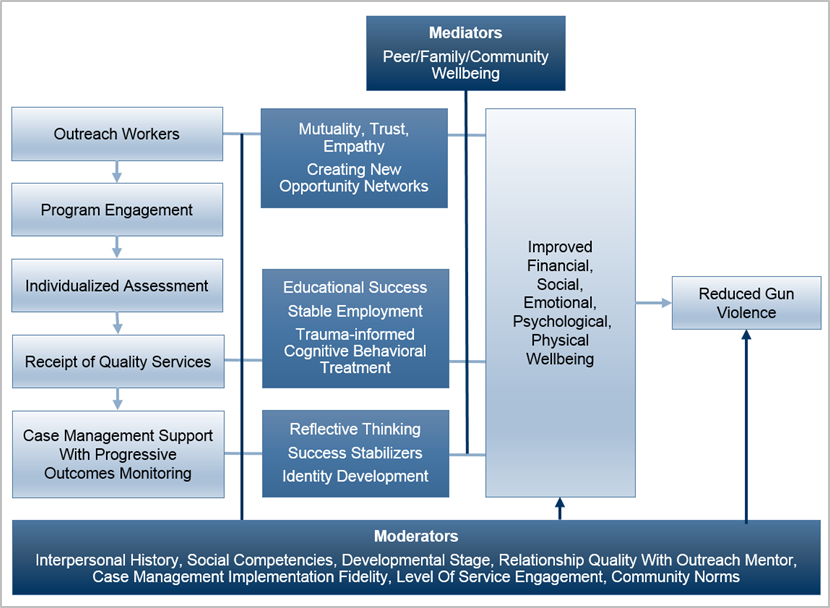Community-Based Violence Prevention Study of the Safe and Successful Youth Initiative: An Intervention To Prevent Urban Gun Violence
The causes and drivers of youth violence are complex—related to many variables including poverty, racism, and lack of education, training, and opportunity.
In partnership with Wested’s Justice and Prevention Research Center, AIR examined the Safe and Successful Youth Initiative (SSYI), an intervention targeting urban firearms violence in 12 cities in Massachusetts. The study looked at community-level changes in violent crime over an eight-year period (2007-2014) in the intervention communities as compared with non-intervention communities.
Surveys and focus groups with community members, local youth, business owners, and SSYI program participants across the state provide a unique view into the complexities of these relationships and the central role that race, and changing population demographics have intersected with the way the justice system interacts with young men of color at the greatest risk for gun violence and living in economically vulnerable communities. This report presents the findings and methodology from the study.
Key Findings
- The study’s results add to growing evidence of previous SSYI findings that declines in violent crime (using police generated crime data) continue in the target cities. Among incidents committed by offenders 14-24 years old (the SSYI target population), there are significant differences between this age group and older offenders in the rate changes for violent crime, homicide, and aggravated assaults.
- Findings confirm prior evidence that community members are less likely to call the police and report crime when they do not trust the police to act in their best interests (i.e., police treating witnesses as suspects) and when they fear retaliation from cooperating with police,
- The study reveals a broader problem with the way communities feel targeted by police, rather than a protective supportive partner helping to create a safe community. This result held across different types of community members—from business leaders, to parents, to youth in SSYI and youth who have never had involvement with the justice system.
- Importantly, results suggest that participation in SSYI results in 2.1 fewer violent crimes each month per 100,000 residents in the post-intervention period compared to cities who do not experience the program and this result appears to be related to levels of concentrated disadvantage in communities.
The report also discusses the challenges of applying traditional social science research methods to the study of urban gun violence and offers insights for improving the way evidence is generated in this field of study.
The distinguishing feature of SSYI is its lack of police contact with young men at the greatest risk for gun violence, having previously been victims or perpetrators. SSYI provides outreach and services to young men to address the root causes and drivers of violence by improving their economic, physical, social, and emotional well-being through intensive and ongoing case management and outreach that continues until the young men are self-sufficient and leading healthy, independent lives.

The project was funded by the Office of Juvenile Justice & Delinquency Prevention (OJJDP) and builds on several earlier studies of SSYI funded by the Massachusetts Executive Office of Health and Human Services, creating a foundation for the OJJDP-funded study.

